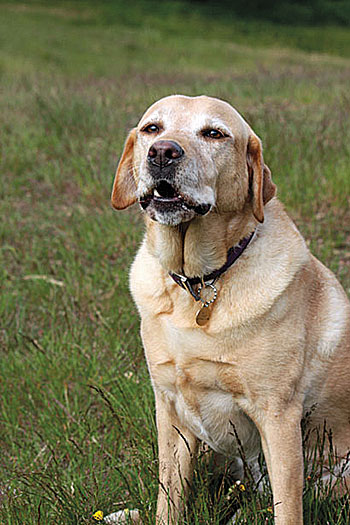By Tiffany Mitchener, DVM

At what age are our pets considered senior citizens? The answer varies depending on size, breed, and species. Cats have a life expectancy of ten to fourteen years. A cat is considered a senior at eight years old and geriatric at ten. Due to the dangers and hardships of the great outdoors, feral cats live only half as long as our domestic friends. Indoor cats also live longer than those who are allowed to roam inside and out. A dog’s life expectancy is mostly breed related. The average life expectancy of a dog is ten to twelve years. Smaller breeds tend to live longer than larger breeds. A medium sized breed (21-50 pounds) is considered a senior at seven years old and geriatric at ten. Interestingly, a giant breed dog (greater than 90 pounds) is considered a senior at just six years old!
Senior pets can develop a lot of health problems similar to people. According to the American Veterinary Medical Association’s website, cancer is responsible for approximately half the deaths of pets greater than ten years old. Dogs tend to get cancer at the same rate as humans; for cats the rate is lower. Other common diseases in our pets include dental, heart, liver, and kidney diseases, diabetes, arthritis, and even senility.
A senior pet requires extra vigilance from her owner to notice any changes in her overall health. Owners should be on the lookout for changes in regular behavior, which could be an indication of an underlying medical problem. Some examples of what to watch for include house soiling, decreased grooming, exercise intolerance, disorientation, or changes in sleep cycles. Owners should watch for physical changes as well. Does she have any unusual lumps developing? Is she gaining or losing weight? Does her hair coat lack its usual sheen? Is her breath beginning to smell bad? Are there changes in her drinking, appetite, or elimination patterns?
In addition, there are a number of things that an owner can do at home to improve a senior pet’s quality of life. It is important to exercise him regularly as this helps to maintain mobility. An older dog may require slower, shorter, more frequent walks rather than his former “marathons.” An older cat may still enjoy interactive play with a “fishing pole”-type toy but for shorter sessions. Modifying a senior pet’s environment can make life easier on him. Make sure that a senior cat has litter boxes on all levels of the house. It may help to get a litter box with lower sides so that it is easier to climb in and out. A dog may need extra trips outside to eliminate. Food and water should be easily accessible as well. High quality, comfortable beds are a must. Ramps can help a dog get in and out of cars more easily. Non-skid mats can aid in a pet’s traction on a slick floor. Since oral health is important, daily tooth brushing can greatly increase a senior pet’s quality of life.
It is a sad fact that our pets do not live as long as we would like. However, with increased owner vigilance, routine veterinary care, and simple changes to the environment, our senior pets can live happier, healthier, and more comfortable lives throughout their golden years.